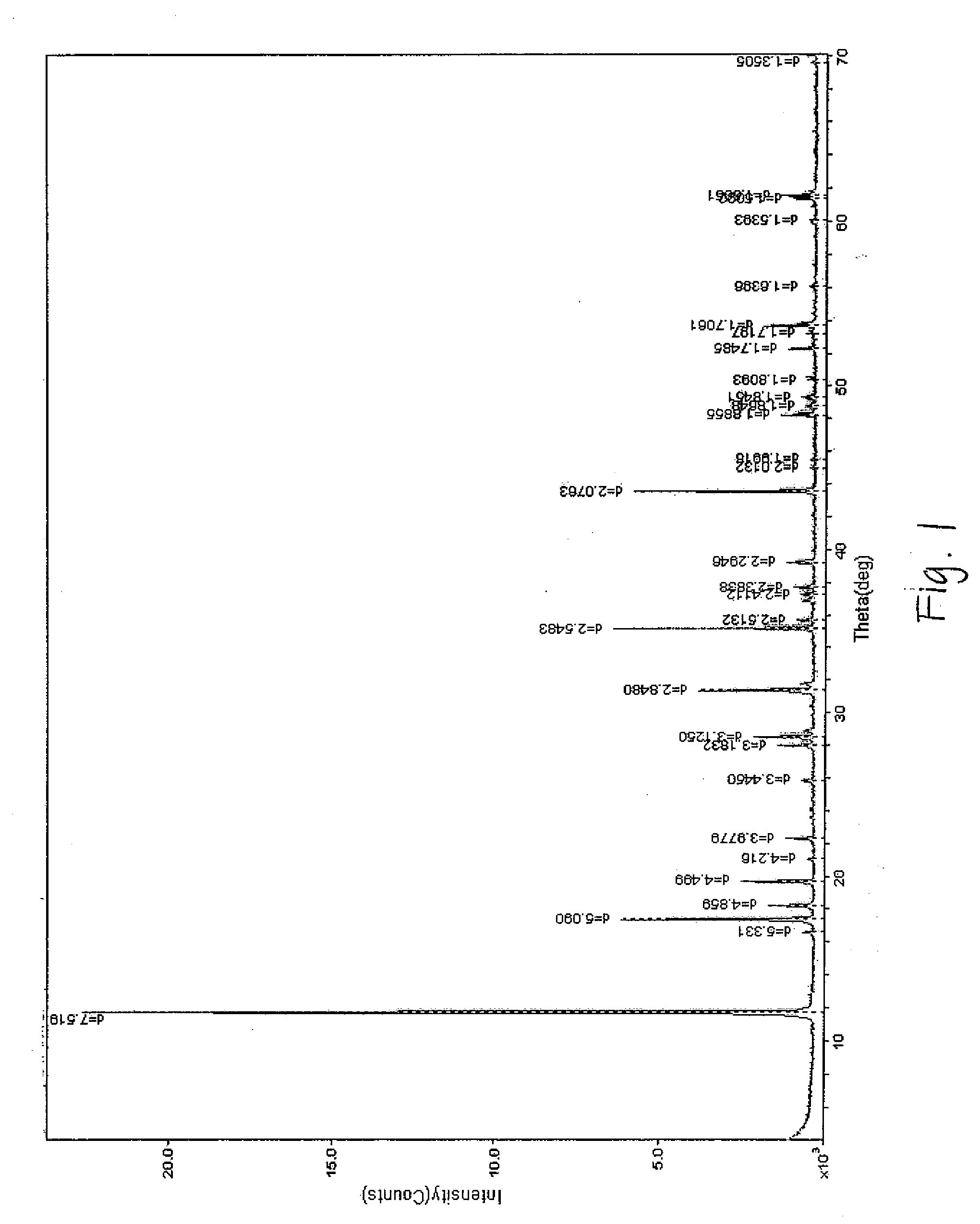Diverting compositions, fluid loss control pills, and breakers thereof
a technology of composition and fluid, applied in the direction of fluid removal, chemistry apparatus and processes, borehole/well accessories, etc., can solve the problems of large quantity of drilling fluid to be lost into the formation, high cost of typical drilling fluid used in under-reaming, and unstable problems
- Summary
- Abstract
- Description
- Claims
- Application Information
AI Technical Summary
Problems solved by technology
Method used
Image
Examples
example
[0046]A 14.2 ppg CaBr2 brine was reacted with diethylene glycol to form a solid composition according to one embodiment disclosed herein. FIG. 1 shows an x-ray diffraction spectrum of the solid formed from the reaction between diethylene glycol and 14.2 ppg CaBr2 brine. The peaks in the spectrum shown in FIG. 1 have been compared with those of known compounds found in currently available compound-identification databases, and none of the spectra of those known compounds match the spectrum displayed in FIG. 1. From this spectrum, it appears that the composition of matter produced when diethylene glycol reacts with 14.2 ppg CaBr2 brine is a novel composition.
[0047]From the determination that the reaction between diethylene glycol and a 14.2 ppg CaBr2 brine produces a novel composition, it also is excepted that that novel compositions of matter will be produced, for example, when triethylene glycol reacts with a 13.0 to 14.8 ppg CaBr2 brine, when triethylene glycol reacts with a 10.9 t...
PUM
| Property | Measurement | Unit |
|---|---|---|
| density | aaaaa | aaaaa |
| density | aaaaa | aaaaa |
| density | aaaaa | aaaaa |
Abstract
Description
Claims
Application Information
 Login to View More
Login to View More - R&D
- Intellectual Property
- Life Sciences
- Materials
- Tech Scout
- Unparalleled Data Quality
- Higher Quality Content
- 60% Fewer Hallucinations
Browse by: Latest US Patents, China's latest patents, Technical Efficacy Thesaurus, Application Domain, Technology Topic, Popular Technical Reports.
© 2025 PatSnap. All rights reserved.Legal|Privacy policy|Modern Slavery Act Transparency Statement|Sitemap|About US| Contact US: help@patsnap.com

